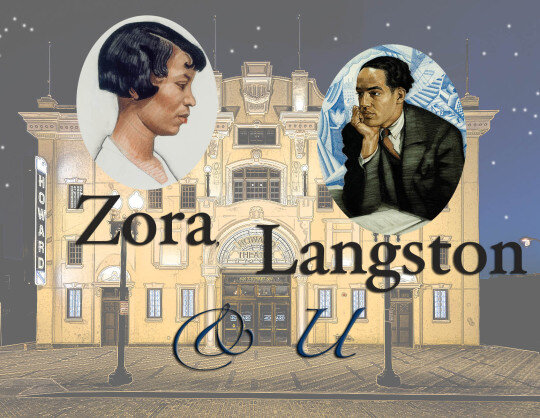Walking Tours as Talk-To-Me Tours
Kamal Ali of Ben's Chili Bowl and Ben's Next Door. photo credit: Colin Danville
Kamal Ali of Ben's Chili Bowl and Ben's Next Door. photo credit: Colin Danville[/caption] Looking at historic homes and buildings while listening to tour guides share stories of the architects, occupants, and significant events of that structure are well and good. But talking with people who call these places home, who work, and have grounded their livelihoods into the fabric of a community brings you deeper into the narrative, even makes you part of it. That has been the goal of Zora, Langston & U, and Ellington, Shaw & U walking tours -- a transmedia engagement experience.
The unique twist to my tours is the opportunity to sit down and share a meal and a drink at small business establishments like Busboys and Poets, Ben’s Next Door, Right Proper Brewing Company, Uprising Muffin Company, and Mockingbird Hill. There we meet the owners, hear their stories and perspectives on a changing landscape. We chat it up with bartenders and craft beverage makers, and talk with each other, sharing an experience together. “I actually feel like I’m on a vacation in my own city,” said one attendee after the Ellington, Shaw & U walking tour.
Both the Zora/Langston and Ellington tours take place in the same neighborhoods but tell two distinct stories of creative communities in Washington, DC during the years of segregation in the capital city and the cultural and social shifts following the 1954 Brown vs. Board of Education decision and the signing of the Civil Rights Act in 1964.
Zora and Langston
Zora and Langston is themed for the writers, African American writers of the “New Negro Movement” that birthed the Harlem Renaissance. They sought to form a community that was inspired by the cultural fabric of the educators, the famous Saturday Nighters literary salon group, civil rights activists, scholars, the international scene of Washington, D.C.’s diplomatic community. And for Langston Hughes and some of his contemporaries, the blues, laborers, and hustlers who peppered 7th Street in the 1920s.
Mack, who used to work on the Hill in the late Senator Edward Kennedy's office, guides us in beer tasting at Right Proper Brewing Company. Photo: Colin Danville
Ellington, Shaw & U is themed for the musicians and music community mostly jazz but also strongly connected to the classical and music education community during the time when schools, housing, and entertainment/business were segregated by race . Perhaps the greatest institution and foundation of DC’s jazz culture was the Frank Holliday pool hall – what I call DC’s first unofficial school of jazz.
It’s important for me to share these stories about Washington, DC artist community and the footprint they left that continues to inspire artists today. Federal Washington has always overshadowed resident Washington. This is why during breakfast or brunch I give an extensive picture show overview to the guests before the actual walking begins. Guests are able to make the connections when they stand in front of or go inside the actual sites.
The tours aren’t flipping a narrative, it’s amplifying a continuing story. But the only way that can happen is to walk and talk to the people who are the actual witnesses, who are here…at least for now in a changing city.
WHAT MAKES A GOOD WALKING TOUR A GREAT TALK-TO-ME EXPERIENCE
1. THEME - Themes can range from people (fact or fiction), food & drink, time, place, events. A strong theme is the foundation of your walking tour's stories.
2. DETAILS – Your guide should be well-prepared for your questions and have a few surprises to share too. Walking tours attract information junkies.
3. PEOPLE, PEOPLE, PEOPLE – People make it happen. Talk to them. Business owners love talking about what they do especially when they love what they do. They also have a point of view that you may not find in the guide book. These individuals want guests to appreciate the value of their community, its stories, and heritage as they do, maybe even more.
4. FOOD & BEVERAGE – Sitting down and sharing a meal or drink makes the experience memorable. It grounds your connection to the place through your senses. Sharing a meal or drink also gives you that vacation feel if you’re doing this as part of a “staycation.”
5. SITES THAT ARE FAMOUS AND INFAMOUS – Stories about scandals and intrigue are more popular than stories about where famous people lived. Walking tours are essentially theater.




